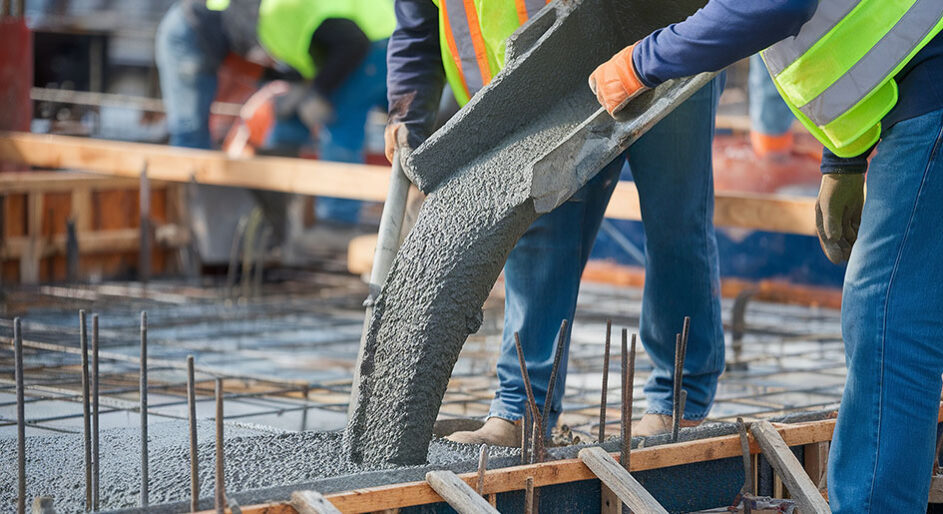Building a greener future

Concrete is among the most durable building materials. Many have marveled at ancient Roman structures built from concrete that have lasted through millennia. Their durability is an inspiration to modern builders, and one might rightly ask, “Why don’t modern concrete structures last as long as these ancient ones?”
The short and simple answer is that modern concrete is different in two critical aspects: modern concrete must deliver vastly increased performance, and it must at the same time remain economical. Modern concrete elements must be thinner, narrower and span greater distances, while at the same time carrying greater loads and resisting earthquakes. These demands necessitate the inclusion of steel reinforcement and so today nearly all structural concrete is reinforced with steel rebars. Unfortunately, including steel will also introduce the potential for corrosion, cracking and deterioration.
Concrete has a natural porosity, which allows water and waterborne salts to penetrate and cause corrosion of the reinforcement. Corroding steel will expand, causing cracks and these cracks will allow even more water to penetrate – accelerating the deterioration process. If the concrete contains cracks to begin with, this process will initiate even sooner and more rapidly.
Climate change is a relatively recent and increasing threat to the durability of concrete structures. We are seeing more extreme weather systems, such as tropical storms and hurricanes in ever increasing strength and frequency. Coastal areas are often inundated with salt water. In the future, we can expect to see higher sea levels and even greater temperature extremes. Deterioration mechanisms are bound to accelerate. Modern, reinforced concrete will require greater protection than ever before.
Concrete is made from rock and sand that is “glued” together by cement. One way to make concrete stronger and more durable is to add more cement, but this presents a new problem. The manufacturing of ordinary cement releases large amounts of CO2 into the atmosphere. For every ton of cement manufactured, the process will release between 0.6 and 0.9 tons of CO2. This adds about 1.5 billion tons of carbon to the atmosphere each year – about 8 per cent of global carbon emissions. We can see that increasing the portion of cement in concrete can actually have an unintended negative effect as adding carbon contributes to more global warming and climate change.
The global community’s response to this self-inducing cycle has been drastic, calling for massive reductions in the carbon output from manufacturing cement and concrete. More efficient manufacturing has helped and employing carbon capture technologies is gaining some traction. Replacing at least a portion of the cement in concrete with alternative cementing materials is a proven strategy and has become commonplace.
Incorporating more advanced formulation technologies for concrete must also be part of the solution. Innovations in the use of specialized admixtures are increasingly transforming the construction industry, giving builders a more sustainable concrete material for building modern structures while reducing the need and cost for unexpected maintenance and repairs. Utilizing these technologies in the initial stages of construction can save owners 50-70 per cent on repair costs, according to the American Concrete Institute.
One of the most effective technologies has been permeability-reducing admixtures (PRAs), such as crystalline waterproofing admixtures. These admixtures react to form crystals that block pores and fill cracks in concrete to protect it from water penetration, even against extreme hydrostatic pressure. The first crystalline waterproofing admixture was invented in 1980 by our company but has only become widely used worldwide in the past 30 years.
Another specialized admixture pioneered by Kryton is a unique abrasion-resisting admixture called Hard-Cem. This admixture can reduce abrasive or erosive wear in concrete exposed to harsh environments and extend the service life of the concrete by double.
Over the years, concrete admixtures have gained popularity for their ability to resist corrosion, reduce carbon emissions, avoid unnecessary maintenance or repairs, and improve the performance, durability and lifespan of infrastructure. In the past, decision-makers may have prioritized short-term savings over long-term durability, but this mindset is shifting. Builders now recognize that using concrete admixtures can reduce the amount of cement needed, shorten construction timelines, and lower labour costs, making it a financially viable option for creating more sustainable, durable structures. For example, Kryton has helped its government sector clients achieve greater durability for large infrastructure such as hydroelectric dams and to address leakage issues in drinking water systems by incorporating these advanced admixtures into their concrete.
To be truly sustainable, concrete must not only minimize its environmental footprint, but also deliver long-term durability and service life. Fortunately, the challenges faced by concrete structures from the effects of climate change can be addressed through improved technologies. The construction industry can realize both environmental and economic benefits by simply using a more durable version of concrete that lasts much longer and doesn’t have to be repaired as much – reducing the demand for so much additional concrete, cement and other materials.
Kevin Yuers is Kryton International’s vice president for product development and acquisitions. His 40 years of industry experience allows him to bring real-world solutions and value to the company’s many customers and associates spread around the globe. He is the author of numerous articles and is the named inventor on patents related to the concrete industry. www.kryton.com.
The post Building a greener future appeared first on REMINET.

